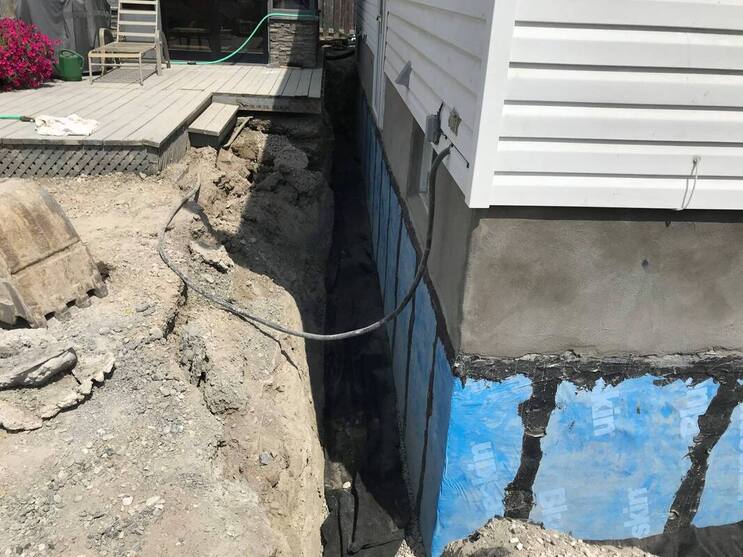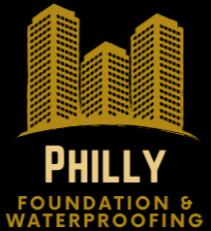Fortify Your Fortress: The Essential Guide to Exterior Waterproofing
Shield Your Home from the Elements with Expert Strategies and Professional Services
In the quest to protect and preserve our homes, exterior waterproofing stands as a paramount strategy against the relentless assault of the elements. This comprehensive guide aims to empower homeowners with the knowledge and tools necessary to fortify their fortresses, ensuring a dry, durable, and dependable living environment. From understanding the basics of waterproofing to selecting the right professional services, we cover every aspect to provide you with a master plan for safeguarding your home.

Understanding Exterior Waterproofing
Exterior waterproofing involves the application of waterproofing materials and techniques to the outside walls of a building to prevent water from penetrating the structure. It's an essential defense mechanism against water damage, mold, and foundation issues. This preventative measure is particularly crucial in areas prone to heavy rainfall, snow, and fluctuating ground moisture levels.
The Significance of Professional Services
While DIY approaches can be tempting, the complexity and importance of exterior waterproofing often necessitate professional services. Expert waterproofing professionals bring a wealth of experience, specialized tools, and knowledge of the latest materials and methods to ensure comprehensive protection. Engaging professional services guarantees a meticulous assessment of your home's specific needs and a tailored waterproofing strategy.
Step-by-Step Guide to Exterior Waterproofing
Step 1: Inspection and Assessment
The first step in the waterproofing process involves a thorough inspection of your home's exterior. This assessment identifies potential vulnerabilities, such as cracks in the foundation, improper drainage, and areas susceptible to water accumulation. Professional services excel in detecting these issues, offering an accurate diagnosis and a roadmap for remediation.
Step 2: Choosing the Right Waterproofing Materials
The market offers a plethora of waterproofing materials, each suited to different scenarios and structures. Options include liquid waterproofing membranes, waterproofing paint, and sheet membranes. Professionals can advise on the best materials for your home, considering factors like climate, soil type, and the building's construction.
Step 3: Preparing the Surface
Proper surface preparation is crucial for effective waterproofing. This step might involve cleaning the walls, repairing cracks, and removing any vegetation or obstacles. Ensuring a clean and smooth surface helps the waterproofing materials adhere better, providing a more durable and effective barrier.
Step 4: Applying Waterproofing Materials
The application process varies depending on the chosen materials but generally involves covering the exterior walls with a uniform and continuous layer of waterproofing. Precision and expertise are vital during this phase to avoid gaps or weak spots that could compromise the barrier.
Step 5: Installing Drainage Solutions
Effective waterproofing extends beyond just the walls. Installing proper drainage solutions, such as French drains or sump pumps, is essential to manage water around the foundation. Professional services can design and implement these systems to ensure water is directed away from your home, further enhancing waterproofing efficacy.
Step 6: Regular Maintenance and Inspection
Finally, regular maintenance and inspection are crucial to sustaining the integrity of your waterproofing system. Seasonal checks, especially after extreme weather events, can identify and address any issues before they escalate. Professional services often offer maintenance plans, ensuring your home remains protected year-round.
Choosing the Right Professional Services
Selecting the right professional service for your exterior waterproofing project is critical. Look for companies with strong reputations, ample experience, and positive customer reviews. Certifications and licenses are also important indicators of a provider's expertise and reliability. Before committing, discuss your project in detail, asking about their approach, materials, and any guarantees they offer.
Conclusion
Exterior waterproofing is a complex but crucial process for protecting your home from water damage and ensuring its longevity. While it requires an upfront investment, the peace of mind and protection it offers are invaluable. By understanding the essential steps involved and the importance of professional services, homeowners can make informed decisions and take proactive measures to shield their homes from the elements. Remember, when it comes to waterproofing, the right preparation and expertise can turn your home into a true fortress against moisture and water intrusion.
Protect Your Investment from Structural Damage, Water & Mold Serving the Tri-Sate Area
PA License #PAHIC169133
DE License #2022707501
NJ License #13VH12234100
Hours of Operation
Mon to Fri 7am to 7pm
Sun to Sun: 7am - 7pm
©Philadelphia Foundation Repair & Waterproofing

